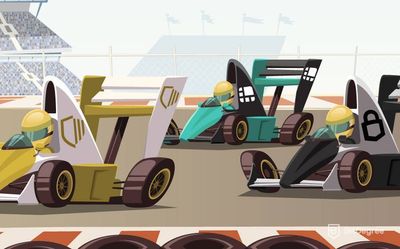Key Takeaways
- Fractional NFTs allow multiple investors to own a share of high-value digital assets, making them more accessible to a wider audience.
- The current market for fractional NFTs in 2024 is evolving, with many platforms becoming harder to access, and major marketplaces like OpenSea and Binance NFT Marketplace not yet fully supporting them.
- Despite challenges in availability, fractional NFTs offer a promising way to democratize ownership of expensive digital assets and could become more widely accessible as the market develops.
Stop overpaying - start transferring money with Ogvio. Sign up, invite friends & grab Rewards now! 🎁
If you’ve been keeping up with the NFT space, you’ve probably heard about fractional NFTs. They’re changing the game by allowing multiple people to own a slice of high-value digital assets that would otherwise be out of reach.
Fractional NFTs are more than just a way to share ownership—they’re transforming the digital economy. Whether it’s artwork, real estate, or even virtual assets in games, fractional ownership is opening doors for a broader audience. And the best part? It’s not just for tech-savvy crypto enthusiasts. Anyone interested in diversifying their digital portfolio can get in on this.
It’s a pretty cool concept—imagine being able to own part of a rare piece of digital art without having to pay the full price. But, is it still a popular trend in 2024, considering the changes in the NFT market in recent years? Can we easily buy fractional NFTs on popular platforms like OpenSea and Binance NFT Marketplace? We'll discuss the answers here.
Read more to learn about how fractional NFTs work, why they matter, and how they’re changing the market! Without further ado, let’s dive into the world of shared digital ownership and see how fractional NFTs are shaping the future of the NFT space.

Did you know?
Subscribe - We publish new crypto explainer videos every week!
What is a Perpetual Contract in Crypto? (Definition + Example)


Table of Contents
- 1. What are Fractional NFTs?
- 2. How Fractional NFTs Work
- 2.1. Tokenizing and Fractionalizing an NFT
- 2.2. The Role of Smart Contracts
- 2.3. Trading and Owning Fractions
- 3. Fractional NFTs VS Traditional NFTs
- 3.1. Ownership: Full VS Fractional
- 3.2. Liquidity: Easier to Buy and Sell
- 3.3. Price Accessibility: High VS Low Entry Barriers
- 3.4. Control: Full Ownership VS Shared Decision-Making
- 4. Key Use Cases for Fractional NFTs
- 4.1. Art and Collectibles
- 4.2. Real Estate
- 4.3. Gaming and Virtual Worlds
- 4.4. Music and Entertainment
- 5. Benefits and Risks of Fractional NFTs
- 6. The State of Fractional NFTs in 2024
- 7. Conclusions
What are Fractional NFTs?
So, what are fractional NFTs? At their core, they’re NFTs that have been divided into smaller parts, allowing multiple people to own a portion of a single digital asset. Normally, NFTs—like rare digital art, collectibles, or virtual real estate—are owned entirely by one person, and the price to buy one can be pretty steep.
Latest Deal Active Right Now:But with fractional NFTs, that’s no longer the case. This is the process of breaking down a single NFT into smaller, manageable parts known as fractions or shares[1].
Think of it like this: let’s say there’s a digital artwork worth $100,000. Instead of one person buying the entire piece, fractional NFTs allow the artwork to be split into smaller, more affordable shares. This means that for as little as $100, you could own a fraction of that $100,000 artwork.
In return, you hold a piece of the ownership, and if the value of the artwork rises, the value of your fraction could increase too. It’s an innovative way to bring more people into the NFT market without requiring large amounts of capital upfront.

One of the most exciting things about fractional NFTs is that they open up a new world of possibilities for people who want to invest in digital assets. Whether it’s art, virtual land, or collectibles, fractional NFTs allow you to own a piece of something valuable without needing to commit to the full cost. This makes it easier for more people to participate in the growing NFT market.
For example, imagine being a part-owner of a rare NFT from a famous artist or owning a fraction of a valuable piece of virtual real estate in a metaverse. You don’t have to be a millionaire to get involved. Fractional NFTs democratize access, letting everyday investors like you and me share in the value of digital assets.
Another reason fractional NFTs are gaining popularity is because they make digital ownership more liquid. Traditionally, owning a high-value NFT meant that if you ever wanted to sell it, you’d have to find someone willing to buy the entire asset, which isn’t always easy. But with fractional ownership, there’s more flexibility. People can buy or sell smaller portions, making it easier for assets to change hands and for investors to realize profits.

By lowering the barriers to entry, fractional NFTs are transforming the way we think about digital ownership. They offer a more accessible, inclusive way to invest in the growing world of NFTs, helping to fuel the expansion of this emerging market.
How Fractional NFTs Work
Now that we’ve covered what fractional NFTs are, let’s dive into how they actually work. I know that the technical side of NFTs can feel a little overwhelming, but I’ll break it down as simply as possible.
Tokenizing and Fractionalizing an NFT
The ERC (Ethereum Request for Comment) standards, particularly ERC-20, ERC-721, and ERC-1155, play a crucial role in the NFT fractionalization process[2]. They define how tokens can be created, transferred, and managed on the Ethereum blockchain. Let me explain how they work:
- ERC-721: The Unique Item
Think of an ERC-721 token as a unique item in a collection, like a rare painting. Each ERC-721 token represents a distinct, one-of-a-kind NFT that cannot be duplicated. Just like how you can't swap one rare painting for another because they’re individually valuable, ERC-721 tokens are non-fungible, meaning they represent a single, unique digital asset, like a piece of digital art or a collectible. This is the NFT that you want to fractionalize.
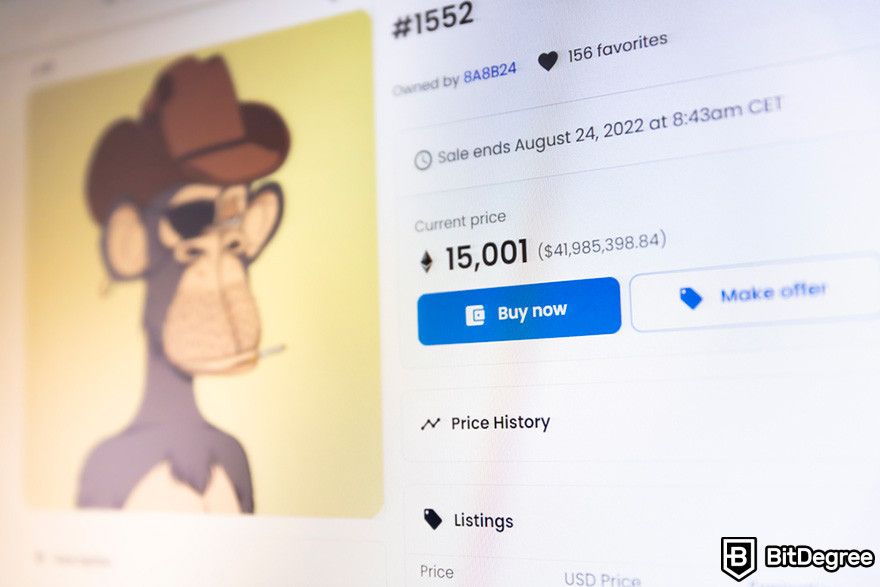
- ERC-20: The Currency of Shares
Now, to fractionalize that rare painting, you’d split its ownership into shares, kind of like a company selling stock. In the world of NFTs, this is where ERC-20 tokens come into play. ERC-20 tokens are fungible, meaning they’re interchangeable, just like USD or Bitcoin. When you fractionalize an NFT (like an ERC-721 token), you create ERC-20 tokens that represent ownership shares of that unique NFT. Each token acts like a share in a company, giving multiple people a claim on that digital asset.
For example, if you have a rare NFT and break it into 1,000 ERC-20 tokens, anyone who holds one of those tokens effectively owns 1/1,000th of the NFT.
- ERC-1155: The Versatile Storage Unit
Imagine ERC-1155 as a multi-purpose storage unit that can hold different kinds of items. Unlike ERC-721, which only handles unique items (one NFT per token), and ERC-20, which only handles identical items (fungible tokens), ERC-1155 can store both types—unique NFTs and fungible tokens—all in one contract.
For fractionalization, this is useful because ERC-1155 can handle both the original NFT (the ERC-721 token) and the fractional shares (ERC-20 tokens) in one system. It’s like having a warehouse where you store both unique artwork and the smaller shares of ownership in those artworks. This standard allows for greater efficiency in fractionalization because it reduces the need for multiple contracts and simplifies how assets are managed.

Now to put it all together, let’s say you have a unique digital artwork (an ERC-721 token). To fractionalize it, you can lock that ERC-721 token in a smart contract and issue fungible ERC-20 tokens that represent fractional ownership of that artwork. These ERC-20 tokens are then sold or distributed to multiple investors. In some cases, you might use ERC-1155 to simplify the process by managing both the original NFT and its fractional tokens under the same contract.
So, in essence, ERC-721 creates the unique NFT, ERC-20 divides it into interchangeable ownership shares, and ERC-1155 provides a flexible framework to manage both kinds of tokens efficiently. This is how the technical standards come together to make NFT fractionalization possible.
Of course, this is only true for NFTs that run on the Ethereum blockchain. Other blockchains, such as Tezos and Flow, have their own NFT standards and methods for fractionalization. For instance, Tezos uses FA1.2 and FA2 tokens, which are similar to ERC-20 and ERC-721, but designed specifically for Tezos. Flow, known for NBA Top Shot, also has its own approach to NFTs but supports fractionalization with smart contracts that lock the original NFT and issue tokens representing fractional ownership.
The Role of Smart Contracts
Smart contracts also have a crucial role in making fractional NFTs work. You can think of them as the invisible middleman who handles all the details behind the scenes. Once an NFT is fractionalized, the smart contract ensures that each fraction is securely tied to the original asset. It also makes sure that ownership records are clear and trackable.
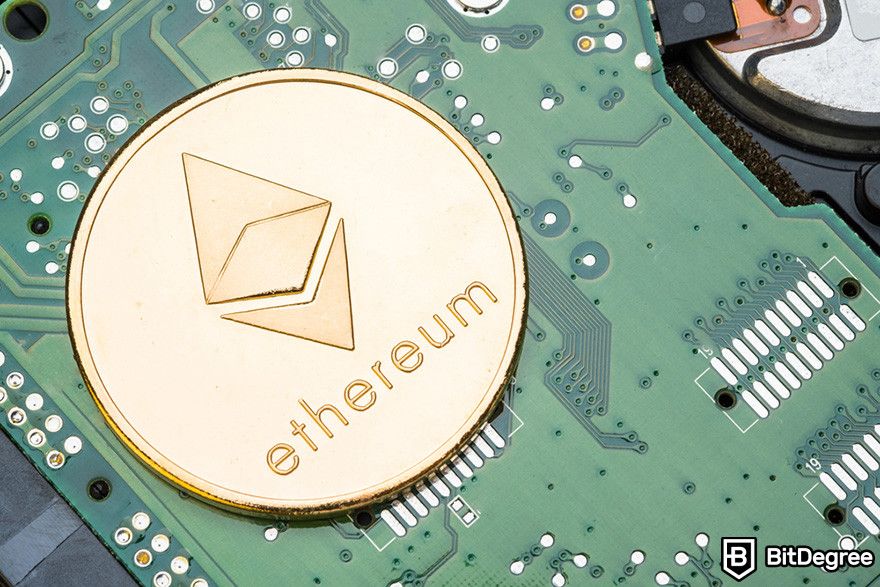
A good analogy for smart contracts is an automated vending machine. You put in your money, and the machine delivers the exact product you paid for without any human intervention. In the same way, smart contracts ensure that fractions of an NFT are distributed to the rightful buyers and that all transactions are transparent. This helps build trust in the system, as the process is automated and doesn’t rely on third-party oversight.
Trading and Owning Fractions
Once you own a fraction of an NFT, you can trade it, sell it, or simply hold onto it as an investment. The fractions are typically represented by tokens that are compatible with decentralized exchanges, which means you can sell your share whenever you like, as long as there’s a buyer. It’s similar to how shares of stock are traded on the stock market. If the value of the NFT increases, so does the value of your fraction.
Let’s say you buy 5% of a piece of digital artwork that’s worth $10,000. If the value of the artwork doubles to $20,000, your fraction would now be worth twice as much. You can either sell your fraction for a profit or hold onto it in hopes that the value keeps climbing. This flexibility is one of the main reasons people are excited about fractional NFTs—they offer liquidity that traditional NFTs often lack.
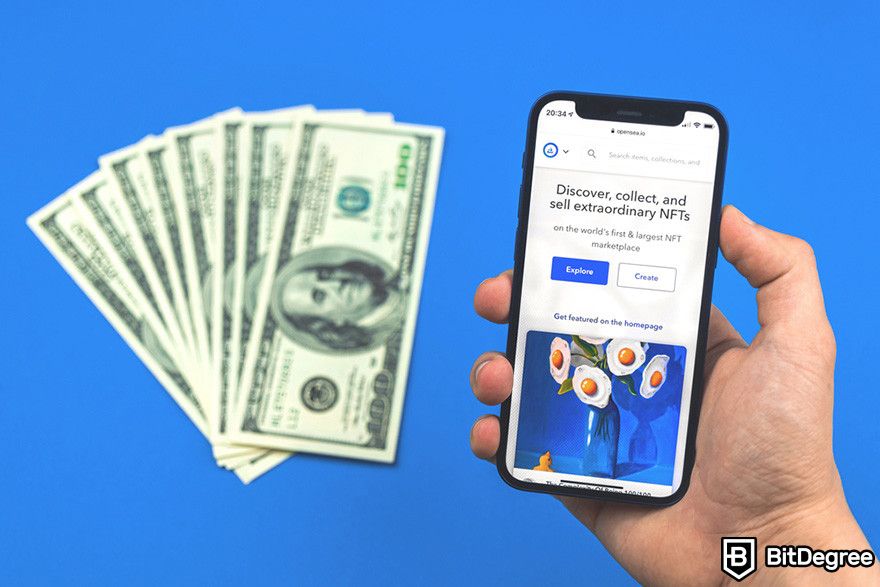
Here’s where things get interesting: in some cases, it’s possible to reassemble the original NFT by buying up all the fractions. Let’s say an NFT was split into 100 fractions, and you manage to acquire every single one. Once you own all 100 tokens, the smart contract can unlock the original NFT, and you’ll have full ownership of the entire asset again.
This process isn’t always practical, but it’s a cool feature that adds another layer of flexibility to fractional NFTs. It’s like owning all the slices of the pie and putting them back together to have the whole thing to yourself.
Fractional NFTs VS Traditional NFTs
Now that we’ve covered what fractional NFTs are and how they work, let’s compare them to traditional NFTs. While both represent ownership of digital assets, they do so in different ways. Understanding these differences is key to figuring out which option might work better for you as an investor.
Ownership: Full VS Fractional
With traditional NFTs, you own the entire asset outright. It’s like buying a house—you get full ownership, full control, and all the potential profits or losses that come with it. Traditional NFTs are great if you can afford the full price and want complete ownership of a digital asset, whether it’s art, music, or virtual land.

On the other hand, NFTs' fractional ownership allows you to own just a part of the asset, like owning a share of stock. Instead of buying the whole “house,” you buy a room or a share of it. This approach makes high-value NFTs more affordable and accessible, especially if you don’t have the capital to buy a whole NFT upfront.
Plus, fractional ownership spreads the risk among multiple investors. If the NFT’s value drops, you’re not on the hook for the entire loss—just your fraction.

Did you know?
Subscribe - We publish new crypto explainer videos every week!
What is a MetaMask Wallet? (And How to Use it - Animated)


Liquidity: Easier to Buy and Sell
One of the biggest advantages of fractional NFTs is liquidity. Traditional NFTs can be hard to sell because you need to find someone willing to pay the full price for the whole asset. This can take time, especially if the NFT is high-value or niche.

With fractional NFTs, the story is different. Since you own a smaller piece of the NFT, it’s easier to find buyers for your fraction. It’s like trading smaller stocks rather than a large, expensive share—there’s a bigger pool of potential buyers. Platforms like Unicly and Fractional.art make it simple to trade these fractions, giving you more flexibility if you want to cash out your investment.
Price Accessibility: High VS Low Entry Barriers
Another major difference between traditional NFTs and fractional NFTs is the price of entry. Traditional NFTs, especially high-value ones, can be incredibly expensive. Think of digital art pieces from popular creators that sell for hundreds of thousands or even millions of dollars. If you don’t have that kind of money, you’re out of luck when it comes to owning one.
Fractional NFTs change this dynamic. By splitting the asset into smaller parts, they lower the entry barrier for investors. Instead of needing $100,000 to buy a rare NFT, you might only need $100 to own a fraction. This makes the NFT space much more inclusive, giving smaller investors a chance to get involved without breaking the bank.
Control: Full Ownership VS Shared Decision-Making
When you own a traditional NFT, you have full control over what happens with that asset. You can hold it, sell it, or use it in any way you see fit. The decision-making is entirely in your hands, which can be empowering if you like having complete ownership.

With fractional ownership of NFTs, control is often shared among all the owners. Decisions about the future of the asset—like whether to sell the entire NFT or continue holding—may require a majority vote among the fraction holders. This shared decision-making can be a drawback if you prefer having full control over your investments, but it’s a trade-off for the accessibility and flexibility that fractional ownership provides.
Key Use Cases for Fractional NFTs
Now that we’ve covered the basics, let’s explore where fractional NFTs are making the biggest impact. From digital art to real estate, the possibilities seem endless. The beauty of NFTs fractional ownership is that it opens up new opportunities for both creators and investors, allowing people to participate in markets they couldn’t access before. Let me walk you through some of the most exciting potential use cases.
Art and Collectibles
Art is one of the most obvious areas where fractional NFTs shine. Historically, owning a piece of high-value art was a privilege reserved for the wealthy. Whether it’s a painting by a famous artist or a rare digital collectible, these assets typically come with a hefty price tag. Fractional NFTs change that dynamic entirely by allowing multiple people to co-own a piece of art.

Let’s say a digital artwork is worth $1 million. For most of us, that’s completely out of reach. But by fractionalizing the NFT, the artist or owner can split it into 1,000 parts, allowing people to buy into the artwork at just $1,000 per share. Now, anyone with a more modest budget can hold a stake in something valuable, and if the artwork appreciates over time, the value of each fraction increases too.
Real Estate
Believe it or not, fractional NFTs aren’t just limited to digital assets. Real-world assets like real estate can also be fractionalized, creating a whole new way to own and invest in property. Traditionally, buying real estate requires significant capital, making it tough for smaller investors to participate in the market. With fractional NFTs, it’s now possible to tokenize property ownership.
Here’s how it works: an NFT represents ownership of a property (or a portion of it), and that NFT is then divided into fractions. Each fraction gives the owner a share of the property’s value, and they can trade or sell that share whenever they want. Imagine owning a fraction of a luxury apartment in a major city without having to buy the entire thing—that’s the power of NFTs in real estate.

This could revolutionize the way we invest in property. Fractional NFTs allow people to diversify their real estate portfolio, spreading their investments across multiple properties without having to take on the full financial burden of owning a single property outright.
Gaming and Virtual Worlds
If you’ve heard about the metaverse, you know that it’s growing fast, and fractional NFTs are playing a big role in shaping its economy. Virtual worlds, like Decentraland and The Sandbox, allow users to buy virtual land, items, and other in-game assets. Some of these assets are incredibly valuable, making them out of reach for most people. That’s where fractional ownership comes in.
In virtual worlds, owning a piece of virtual land or a rare in-game item can have real-world value. But instead of shelling out thousands of dollars for a single plot of land, fractional NFTs let you buy a fraction of that asset. This makes it possible for gamers and investors to get involved in the metaverse economy without having to break the bank.
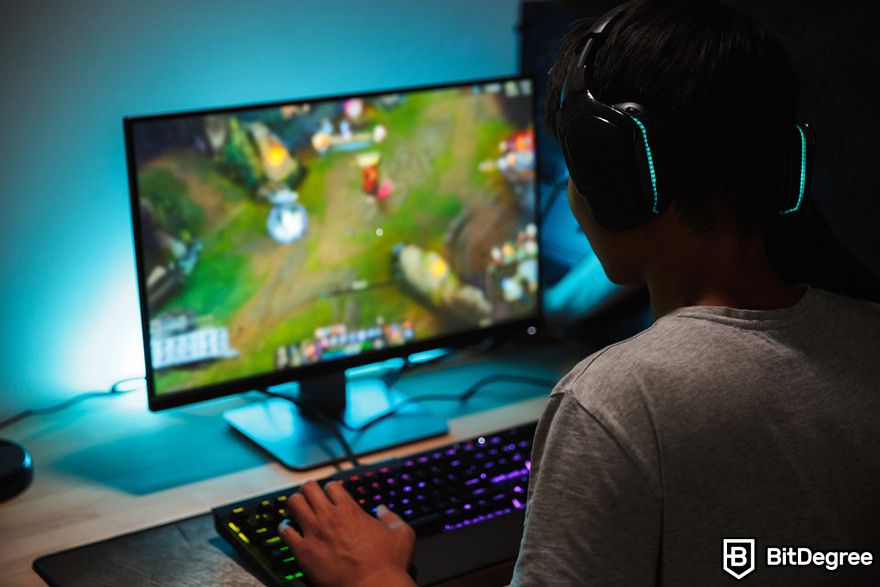
Plus, shared ownership can create new opportunities for collaboration. Imagine co-owning a virtual shopping mall in Decentraland with several other people, each of you sharing in the revenue as virtual visitors come and go. The possibilities are almost endless.

- Secure and reliable
- Accepts fiat currencies
- Lots of trading options
- Reputable exchange
- Accepts fiat currencies
- Offers various trading options

- Huge trading variety
- Regulation-compliant around the globe
- Fair trading fees
- Beginner-friendly
- A wide array of features
- Vast number of different crypto coins & tokens

- Beginner-friendly
- Secure
- Decent trading and withdrawal fees
- Crypto.com Visa Card
- Automated tools & bots
- Ecosystem synergy with CRO
Music and Entertainment
Music and entertainment are also ripe for disruption by fractional NFTs. Artists, filmmakers, and musicians can tokenize their work and sell fractions to fans and investors. This creates a more direct relationship between creators and their audience, as fans can own a stake in the success of a project.
For example, a musician might release a limited-edition song as an NFT and sell fractional ownership to their fans. As the song becomes more popular, the value of those fractions could increase, allowing fans to profit from the artist’s success. It’s a unique way to crowdfund creative projects while offering fans a tangible benefit.
Benefits and Risks of Fractional NFTs
Now before you decide if the fractional ownership of NFTs is for you, it is essential for you to understand the potential benefits and risks associated with it. So, here are some pros and cons of fractional NFTs to help you make a more educated decision.
When it comes to fractional NFTs, there are some clear advantages that make them an exciting option:
- Lower entry barrier: With NFTs fractional ownership, you don’t need thousands of dollars to invest in high-value assets. You can start with a small amount and still own a piece of something valuable.
- Liquidity: Unlike traditional NFTs, fractions can be bought and sold more easily, giving you more flexibility when you want to cash out or reinvest.
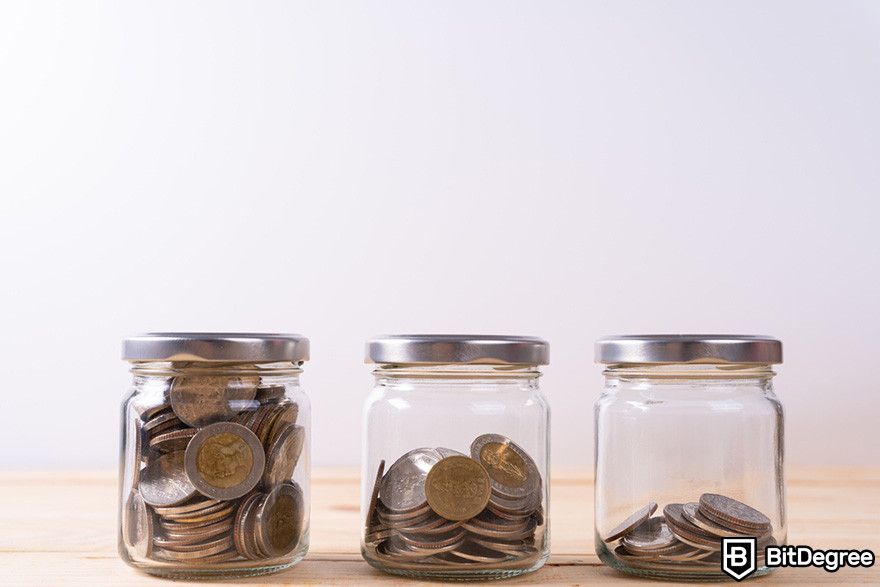
- Portfolio diversification: Fractional ownership allows you to spread your investments across multiple NFTs, reducing the risk that comes with owning just one asset.
- Accessibility: You can own a share of iconic art, real estate, or other exclusive assets that would otherwise be out of reach.
With these potential benefits, fractional NFTs can surely be a safer and more accessible option for those who want to start their journey into owning digital assets. However, it is important to recognize its potential risks. Here are some potential drawbacks of fractional ownership of NFTs:
- Market volatility: The value of NFTs can fluctuate dramatically, and fractional ownership doesn’t eliminate this risk.
- Shared decision-making: When you own a fraction, you often have to rely on group decisions about what to do with the asset, which can limit your control.

- Regulatory uncertainty: The rules around NFTs and fractional ownership are still evolving, which means there could be future regulations that affect your investment, either positively or negatively.
- Liquidity risks: While fractional NFTs generally offer more liquidity, you could still face challenges finding buyers for your fraction, especially in a down market.
Thankfully, there are ways to work around these potential risks. Here are a few tips I’ve found helpful when diving into this space.
First, always do your research. Before buying into a fractional NFT, take time to understand the asset you’re investing in—whether it’s a piece of digital art, real estate, or a virtual asset in the metaverse. Knowing its history and market potential will help you make more informed decisions.

Next, I recommend diversifying your portfolio. Don’t put all your money into a single fraction of one NFT. Instead, spread your investment across different assets. That way, if one loses value, you’re not taking a total hit.
Also, start small. Especially if you’re new to NFTs, invest only what you can afford to lose. Fractional NFTs allow for smaller buy-ins, so take advantage of that and gradually increase your investments as you gain experience.
Finally, keep an eye on regulatory developments. The legal landscape is still evolving, so staying informed about potential changes can help you navigate any new challenges that come up.
The State of Fractional NFTs in 2024
As I’m writing this article, the landscape for fractional NFTs is in a bit of a strange place. On one hand, the concept of fractional ownership of NFTs is incredibly promising, especially when it comes to making high-value digital assets more accessible. On the other hand, finding a reliable platform to actually buy fractional NFTs is tougher than you’d expect.
Many of the platforms that were once known for enabling NFTs fractional ownership have either stopped operating or become difficult to access. For instance, some notable players in the fractional NFT space seem to have gone quiet. I’ve noticed through their social media that updates are sparse, and it’s unclear whether these platforms are still actively supporting fractionalized assets. This includes platforms that were once front-runners in the fractionalization game but now feel more like ghost towns.
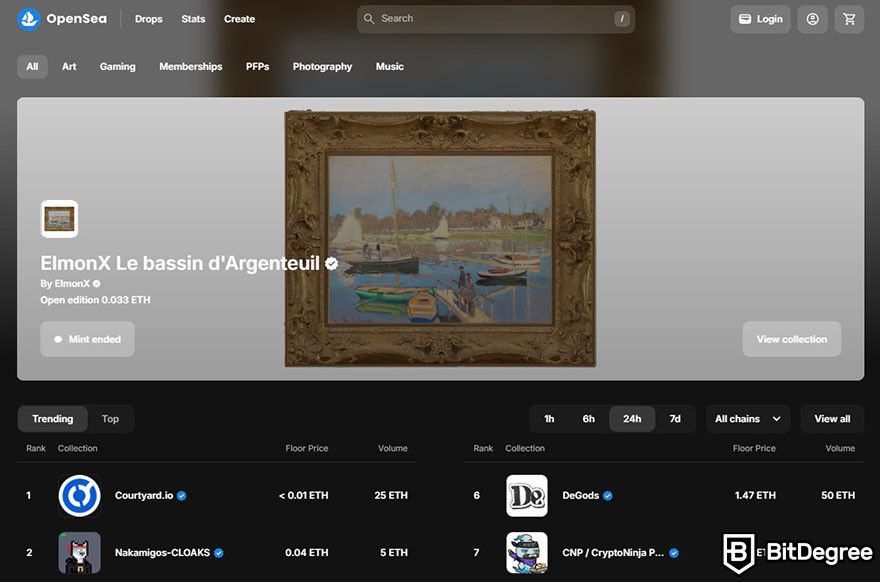
Even the big names like OpenSea and Binance NFT Marketplace, which are giants in the broader NFT space, don’t seem to prominently feature fractional NFTs. When I browsed their platforms, I didn’t find a clear mention or dedicated section for fractional NFTs. It’s almost as if fractionalization isn’t a priority for these marketplaces at the moment, even though they are perfectly suited to handle it given their reach and resources.
I think this raises an interesting question about where the industry is headed. The lack of easy access to fractional NFTs right now doesn’t mean the concept is dead—it’s far from it. In fact, I still find fractional ownership of NFTs an incredibly intriguing way to democratize digital assets.
After all, the idea of owning a piece of a high-value digital collectible or rare artwork without needing a fortune is too appealing to ignore. It’s a concept that can truly open doors for a broader group of investors and enthusiasts alike.

It’s possible that the market for fractional NFTs is simply going through a phase of evolution. As regulations evolve and the NFT market stabilizes, I believe there’s a good chance that fractionalization could make a big comeback.
In the meantime, though, it’s definitely a challenge to find platforms that are consistently supporting NFTs fractional ownership. But this doesn’t take away from the fact that the idea itself remains a compelling solution to the problem of accessibility in the digital asset space.
Conclusions
After exploring what are fractional NFTs and their potential to democratize ownership, it’s clear that fractional ownership of NFTs is an exciting concept. While the idea of owning a piece of high-value digital assets without spending a fortune is appealing, the current landscape in 2024 is a bit challenging. Some platforms that once made NFTs fractional ownership easy to access are now either inactive or hard to find, and even major marketplaces like OpenSea and Binance NFT Marketplace don’t have a clear focus on fractional NFTs at the moment.
That said, the potential of fractionalization to open doors for more people remains undeniable. Despite these hurdles, I believe this method of sharing ownership could have a strong future as the market continues to evolve. If platforms can make fractional NFTs more accessible again, they’ll offer a powerful tool for both seasoned investors and newcomers alike.
It’s a fascinating time to be part of the NFT space, and I’m excited to see where the NFT space goes from here. Whether you’re exploring OpenSea, Binance, or other platforms, keeping an eye on this trend is definitely worthwhile.
The content published on this website is not aimed to give any kind of financial, investment, trading, or any other form of advice. BitDegree.org does not endorse or suggest you to buy, sell or hold any kind of cryptocurrency. Before making financial investment decisions, do consult your financial advisor.
Scientific References
1. Haouari W., Fokaefs M.: A Secure Standard for NFT Fractionalization;
2. Choi W., Woo J., Hong JW-K.: Fractional Non-Fungible Tokens: Overview, Evaluation, Marketplaces, and Challenges




